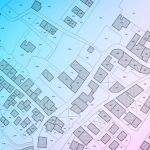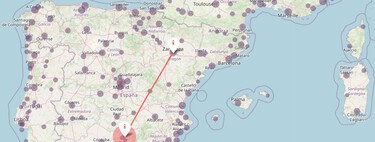The urban heat island (UHI) effect is a threat to the well-being of residents in cities of all sizes. During a heat wave, the UHI effect can even pose a threat to the lives of vulnerable people such as the elderly. Cities are starting to get serious about combating this threat.
And a example of this is the one from Portland.
Depave. The Depave initiative was created in 2008 with a clear objective: we could translate the name of this association as “unpave”. Its two latest projects include: a parking of more than 1,600 square meters next to a church last year, or the Reconditioning of an intersection at an intersection in the city center.
This local initiative has had the support of the US space agency, NASA, when evaluating the impact of its projects.
UHI. Cities tend to retain more heat than small towns. This is due to several factors: building materials that retain heat, poor ventilation due to a street network that blocks wind currents, or the multitude of heat sources such as vehicles or air conditioners.
Under normal conditions this is not a problem, but during heat waves this effect can be decisive in increasing mortality associated with these phenomena. In general, the heat island effect can be inconvenient by reducing our thermal comfort. In other words: making us feel hot.
Cooperating with NASA. The parking lot and intersection projects are not the only ones undertaken by Depave in the most populous city in the state of Oregon. Evaluating the impact of these initiatives is no easy task. This is where Depave has counted on NASA collaboration.
The study was conducted in the context of the Develop Applied Sciences program and led by researcher Keegan Kessler. Using tools such as the TIRS sensor (Thermal Sensor) and the OLI (Operational Land Imager) of the Landsat 8 satelliteKessler and his team were able to estimate temperature reductions at the sites where the interventions were carried out.
Six interventions were analyzed, with an estimated average temperature reduction of 0.55º Celsius. According to the municipal government In the city of Portland, the maximum reduction measured reached 4.3º Celsius.
Unpave Portland. The city council is one of the institutions that have cooperated with the Depave initiative. In this case through the PCEF fund (Portland Clean Energy Community Benefits Fund). According to data from this fund, the initiative had managed to depave more than 33,000 square meters by 2023.
More than heat. Beyond the thermal benefit, depaving areas can bring benefits of another kindmost notably in regard to water management. Paved surfaces generate runoff. Precipitation that falls on them does not filter but flows away and must be captured by city catchment systems.
Depaving interventions are estimated to have alleviated the need for urban water catchment systems in Portland. According to the PCEFThe city’s drainage system receives about 93 million fewer liters per year thanks to the greater filtration caused by unpaved environments.
At Xataka | Whenever there is a cold episode, voices arise questioning climate change. The explanation is simpler than it seems
Image | Elle Hygge/Depave / POT









![[Img #74692]](https://thelatestnews.world/wp-content/uploads/2024/12/What-do-11-and-12-year-old-boys-and-girls-300x200.jpg)

Add Comment